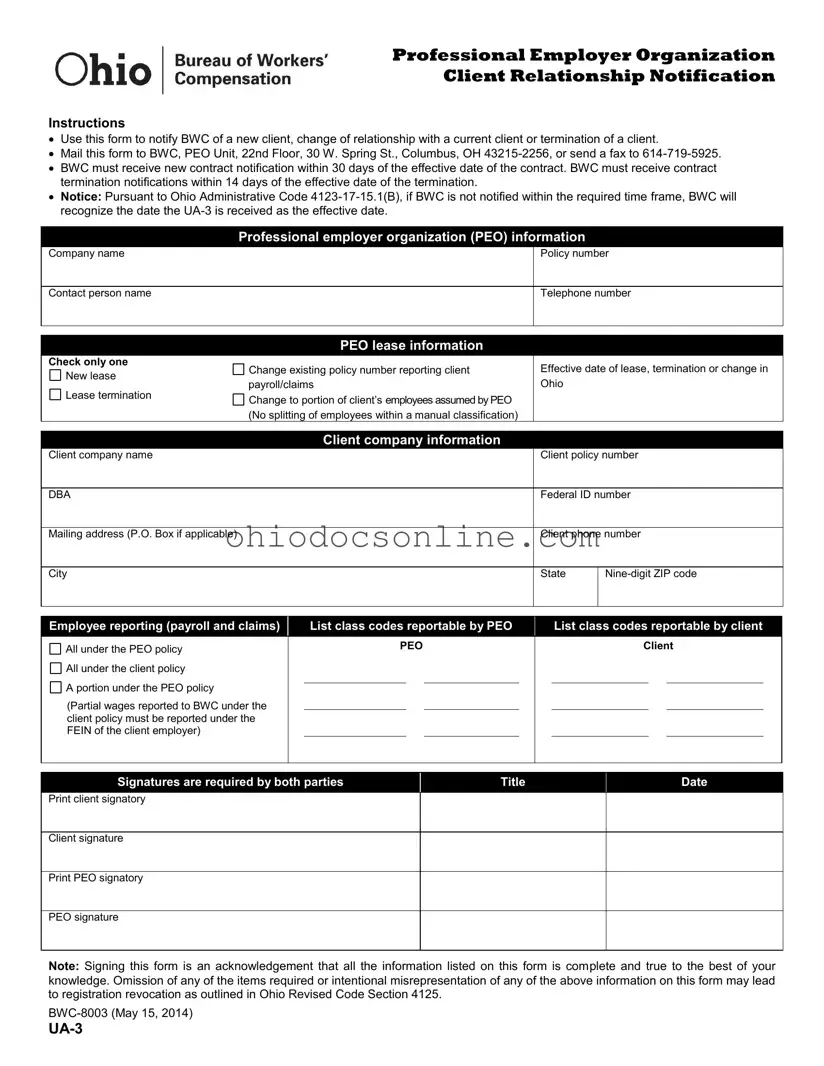Ohio Ua 3 Template in PDF
The Ohio UA-3 form is a crucial document used by Professional Employer Organizations (PEOs) to inform the Bureau of Workers' Compensation (BWC) about changes in client relationships. This includes notifying the BWC of new clients, changes in existing client relationships, or terminations. Timely submission of this form is essential to ensure compliance with Ohio regulations.
Open Editor
